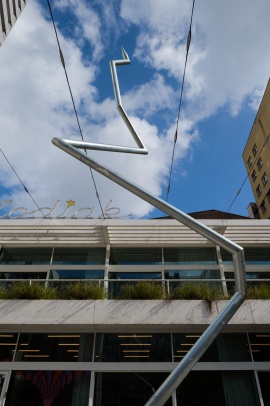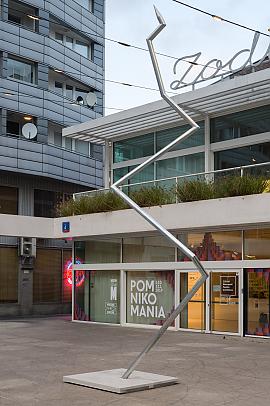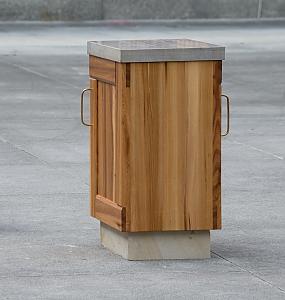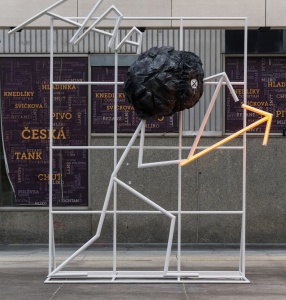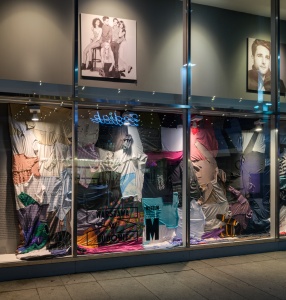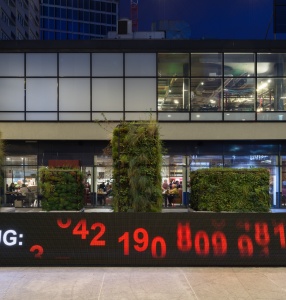Karolina Brzuzan
"Stay Home If You Can (Anour)"
The feeling of danger associated with so-called ‘migrant crises’ is often created through the frequent use of the formula of an ‘uncontrolled force’. The stigmatisation of the Other doesn’t necessary come as a result of direct accusations of spreading diseases, which in extreme cases leads to a direct correlation between migrants as a ‘biblical plague’ of our times.
It’s enough to consider the language used to speak about migrants as a ‘wave’ or a ‘flood’: rising up, as if they were coming from another world, of dangerous – inhuman – powers. Walls are built as protection against this danger, dams against the rising tide, meant to stave off the flood of otherness.
Karolina Brzuzan reverses the roles in the face-off with this force. She endows this history of refugees with the form of a lightning rod – an installation meant to protect people from the forces of nature. In order to provide full protection (for example, the home it is adjacent to) the lightning rod must attract the full brunt of the lightning strike upon itself. The shape of Brzuzan’s monument is not accidental – it retraces the path taken by a Sudanese man named Anour several years ago. In this case, the very form of memorialising the history of migrants makes up the foundation for interpreting their fates.
One element of this interpretation is movement – the state of being on the road, far from home, constitutes the very essence of migration. It’s not enough, however, to conjure up this journey as a line on a map. It would be a truism to suggest that only a rare few can afford to walk freely along a beaten path (as if it were marked out by GPS).The thin line on a map is replaced by the lightning rod, tracing the path of one young migrant in particular, from the north to the south, from Sudan to France, to the famous city of Calais, which has been a migration destination for at least three decades. The twists in the thick steel represent the many obstacles along the way – both human and inhuman. We don’t know how he managed to overcome them, we don’t know to what extent the path was determined by his decisions – or the external obstacles along the way. At the same time, he is the source of this story – indicating the turning points in this journey.
The lightning rod isn’t attached to a particular building, instead it’s placed centrally in the public square as a tool for representation and commemoration, built upon the foundation of the life story of a single individual. Its shape isn’t the result of a synthesis, it doesn’t average the paths taken by all those who have attempted it. And yet, as a formal exercise, this monument is aimed at capturing a sense of universality and spurs one to think about it as a new language for representation for so many other, difficult journeys, those that don’t fit into the dominant Western narrative about the free movement of individuals through the world.
